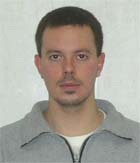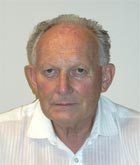Содержание: 2024 | 2023 | 2022 | 2021 | 2020 | 2019 | 2018 | 2017 | 2016 | 2015 | 2014 |2013 | 2012 | 2011 | 2010 | 2009 | 2008 | 2007 | 2006 | 2005 | 2004 | 2003 | 2002 | 2001
2005, 1
Исследование влияния предметов вблизи головы на пространственное восприятие звука
язык: английский
получена 27.12.2004, опубликована 21.01.2005
Скачать статью (PDF, 270 кб, ZIP), используйте команду браузера "Сохранить объект как..."
Для чтения и распечатки статьи используйте «Adobe Acrobat© Reader» версии 4.0 или выше. Эта программа является бесплатной, ее можно получить на веб-сайте компании Adobe© (http://www.adobe.com/).
АННОТАЦИЯ
Свойства передаточной функции головы в значительной степени влияют на возможность определения человеком направления прихода сигнала при пространственном восприятии звука. Для исследования передаточной функции модели головы с торсом (манекена) в заглушенной камере использовалась автоматически управляемая система поворота манекена с разрешением 1 градус по горизонтали и 5 градусов по вертикали. Исследовано влияние на передаточную функцию наличия на манекене головного убора, парика, очков, одежды.
15 страниц, 6 иллюстраций
Как сослаться на статью: Гeоргий Вершеньи, Андраш Илленьи. Исследование влияния предметов вблизи головы на пространственное восприятие звука. Электронный журнал "Техническая акустика", http://ejta.org, 2005, 1.
ЛИТЕРАТУРА
[1] J. Blauert. Spatial Hearing. The MIT Press, MA, 1983.
[2] E. A. G. Shaw. Transformation of sound pressure level from the free-field to the eardrum in the horizontal plane. J. Acoust. Soc. Am. 1974, 56, 1848–1861.
[3] S. Mehrgart, V. Mellert. Transformation characteristics of the external human ear. J. Acoust. Soc. Am. 1977, 61, 1567–1576.
[4] D. Hammershøi, H. Møller. Free-field sound transmission to the external ear; a model and some measurement. Fortschritte der Akustik DAGA-91, Teil A, Bochum, 1991, 473–476.
[5] C. B. Jensen, M. F. Sorensen, D. Hammershøi, H. Møller. Head-Related Transfer Functions: Measurements on 40 human subjects. Proceedings 6-th Int. FASE Conference, Zürich, 1992, 225–228.
[6] W. M. Hartmann. How we localize sound. Physics Today November, 1999, 24–29.
[7] D. J. Kistler, F. L. Wightman. Principal Component Analysis of Head-Related Transfer Functions. J. Acoust. Soc. Am. 1990, 88, 98.
[8] F. L. Wightman, D. J. Kistler. Headphone Simulation of Free-Field Listening I.-II. J. Acoust. Soc. Am. 1989, 85, 858–878.
[9] H. Møller, M. F. Sorensen, D. Hammershøi, C. B. Jensen. Head-Related Transfer Functions of human subjects. J. of the AES, 1995, 43, 300–321.
[10] D. Hammershøi, H. Møller. Sound transmission to and within the human ear canal. J. Acoust. Soc. Am. 1996, 100, 408–427.
[11] H. Møller, M. F. Sorensen, C. B. Jensen, D. Hammershøi. Binaural Technique: Do We Need Individual Recordings? J. of the AES, 1996, 44, 451–469.
[12] P. Maijala. Better binaural recordings using the real human head. Proceedings Inter-Noise 97, Budapest, Hungary, 1997, 1135–1138.
[13] H. Møller. On the quality of artificial head recording systems. Proceedings Inter-Noise 97, Budapest, Hungary, 1997, 1139–1142.
[14] H. Møller, D. Hammershøi, C. B. Jensen, M. F. Sorensen. Evaluation of artificial heads in listening tests. J. Acoust. Soc. Am. 1999,47, 83–100.
[15] E. M. Wenzel, M. Arruda, D. J. Kistler, F. L. Wightman. Localization using nonindividualized head-related transfer functions. J. Acoust. Soc. Am. 1993, 94,
111–123.
[16] J. C. Middlebrooks. Individual differences in external-ear transfer functions reduced by scaling in frequency. J. Acoust. Soc. Am. 1999, 106, 1480–1491.
[17] J. C. Middlebrooks. Virtual localisation improved by scaling nonindividualized external-ear transfer function in frequency. J. Acoust. Soc. Am. 1999, 106, 1493–1510.
[18] E. M. Wenzel, S. H. Foster. Perceptual consequences of interpolating head-related transfer functions during spatial synthesis. Proceedings of the ASSP Workshop on Applications of Signal Processing to Audio and Acoustics, New York, USA, 1993.
[19] H. Møller. Fundamentals of binaural technology. Applied Acoustics, 1992, 36, 171–218.
[20] P. Minnaar, S. K. Olesen, F. Christensen, H. Møller. Localization with Binaural Recordings from Artificial and Human Heads. J. Audio Eng. Soc. 2001, 49, 323–336.
[21] J. Blauert. Psychoakustik des binauralen Hörens. DAGA’84, Darmstadt, invited plenary paper, 117–128, 1984.
[22] J. C. Middlebrooks. Spectral Shape Cues for Sound Localization. Binaural and Spatial Hearing in Real and Virtual Environments, Lawrence Erlbaum Ass., Mahwah, New Jersey, 1997, 77–97.
[23] J. C. Middlebrooks, D. M. Green. Sound localization by human listeners. Ann. Rev. Psychol. 1991, 42, 135–159.
[24] M. Bodden, G. Canavet, J. Grabke, K. Hartung, T. Takahashi. Räumliches Hören in komplexen akustischen Umgebungen. Proceedings of DAGA-94, Bochum, 1994,
1137–1140.
[25] Gy. Wersényi. HRTFs in Human Localization: Measurement, Spectral Evaluation and Practical Use in Virtual Audio Environment. PhD Thesis, BTU Cottbus, Germany, 2002.
[26] Gy. Wersényi. Localization in a HRTF-based Minimum Audible Angle Listening Test on a 2D Sound Screen for GUIB Applications. AES Convention Preprint Paper, Nr.5902, Presented at the 115-th Convention, New York, New York, 2003 October,
10–13.
[27] J. Kawaura, Y. Suzuki, F. Asano, T. Sone. Sound localization in headphone reproduction by simulating transfer functions from the sound source to the external ear. J. Acoust. Soc. Japan, 1991, 12, 203–215.
[28] P. Damaske, B. Wagener. Richtungshörversuche über einen nachgebildeten Kopf. Acoustica, 1969, 21, 30–35.
[29] C. Jin, M. Schenkel, S. Carlile. Neural system identification model of human sound localization. J. Acoust. Soc. Am. 2000, 108(3), 1215–1235.
[30] N. Cheung, S. Trautman, A. Horner. Head-Related Transfer Function Modeling in 3-D Sound Systems with Genetic Algorithms. J. Audio Eng. Soc. 1998, 46(6), 531–539.
[31] D. R. Begault, E. Wenzel, M. Anderson. Direct Comparison of the Impact of Head Tracking, Reverberation and Individualized Head-Related Transfer Functions on the Spatial Perception of a Virtual Speech Source. J. of the AES, 2001, 49(10), 904–917.
[32] P. Berényi, A. Illényi. What does it mean for an HRTF not to have the minimal phase property? Proceedings of Inter-Noise 96, Liverpool, England, 1996, 2127–2130.
[33] D. J. Kistler, F. L. Wightman. A model of head-related transfer functions based on principal components analysis and minimum-phase reconstruction. J. Acoust. Soc. Am. 1991, 91, 1637–1647.
[34] Gy. Wersényi. Measurement system upgrading for more precise measuring of the Head-Related Transfer Functions. Proceedings of Inter-Noise 2000, Nice, France, 2000,
1173–1176.
[35] A. Illényi, Gy. Wersényi. Discrepancy in binaural tests and in measurements of sound field parameters. Proceedings of the International Békésy Centenary Conference on hearing and related sciences, Budapest, Hungary, 1999, 160–165.
[36] Gy. Wersényi, A. Illényi. Test Signal Generation and Accuracy of Turntable Control in a Dummy-Head Measurement System. J. of the AES, 2003, 51(3), 150–155.
[37] Gy. Wersényi, P. Tatai. Detection of reflections in free-field directional hearing by waveform analysis of accurate dummy-head HRTFs. Proceedings of IEEE Instrumentation and Measurement Technology Conference, Budapest, Hungary, 2001, 606–609.
[38] K. A. J. Riederer. Computational quality assessment of HRTFs, EUSIPCO(X) – European Signal Processing Conference, Tampere, Finland, 2000.
[39] C. I. Cheng, G. H. Wakefield. Introduction to Head-Related Transfer Functions (HRTFs): Representations of HRTFs in Time, Frequency, and Space. J. of the AES, 2001, 49, 231–249.
[40] K. Genuit. Untersuchungen zur Bedeutung von einzelnen Strukturen der Außenohrübertagungs-funktion und das räumliche Hören. DAGA’86, Oldenburg, 1986, 485–488.
[41] K. Genuit. Eine systemtheoretische Beschreibung des Außenohres. DAGA’85, Stuttgart, 1985, 459–462.
[42] K. Genuit. Ein kalibrierfähiges Kunstkopf Mess-System. DAGA’84, Darmstadt, 1984, 279–282.
[43] H. Farag, J. Blauert, O. A. Alim. Psychoacoustic Investigations on Sound-Source Occlusion. Journal of the AES, 2003, 51(7/8), 635–645.
[44] E. A. G. Shaw. The external ear. Handbook of Sensory Physiology 1, Auditory System, Anatomy Physiology Ear. Springer, New York, 1974.
[45] D. S. Brungart, W. M. Rabinowitz. Auditory localization of nearby sources. Head-related transfer functions. J. Acoust. Soc. Am. 1999, 106(3), 1465–1479.
[46] M. B. Gardner, R. S. Gardner. Problem of localization in the median plane: effect of pinnae cavity occlusion. J. Acoust. Soc. Am. 1973, 53, 400–408.
[47] B. G. Shinn-Cunningham, S. Santarelli, N. Kopco. Tori of confusion: Binaural localisation cues for sources within reach of a listener. J. Acoust. Soc. Am. 2000, 107(3), 1627–1636.
[48] G. F. Kuhn. Model for the interaural time differences in the azimuthal plane. J. Acoust. Soc. Am. 1977, 62, 157–167.
[49] V. R. Algazi, C. Avendano, R. O. Duda. Elevation localization and head-related transfer function analysis at low frequencies. J. Acoust. Soc. Am. 2001, 109, 1100–1122.
[50] T. Tarnóczy. Über den Verstärkerungs-Verminderungs-Effekt der Ohrmuschel und des Kopfes. Proceedings 6th Int. FASE Conference, Zürich, 1992, 229–232.
[51] K. Genuit, H. J. Platte. Untersuchungen zur Realisation einer richtungsgetreuen Übertragung mit elektroakustischen Mitteln. Proceedings of DAGA-81, Berlin, 1981, 629–632.
 |
Георгий Вершеньи окончил технический университет в г.Будапеште (Венгрия) по специальности электротехника в 1998. Последующие четыре года работал в акустической лаборатории им. Георгия Бекеши. Защитил диссертацию в техническом университете г. Котбус (Германия) в 2002. В настоящее время доцент университета в г.Дьер (Венгрия), а также руководитель лаборатории компьютерных технологий на кафедре телекоммуникаций, читает лекции по электроакустике в технической школе г. Лейпциг (Германия). Георгий Вершеньи член Венгерского акустического общества и Международного общества аудиоинженеров. Научные интересы: акустические измерения, психологическая акустика, моделирование, передача и распознавание информации, передаваемой по акустическому каналу. e-mail: wersenyi(at)sze.hu http://uni.sze.hu/ |
|
 |
Андраш Илленьи окончил Университет естественных наук (физико-математический факультет) в г.Будапешт (Венгрия) в 1956. В настоящее время - руководитель акустической лаборатории им. Георгия Бекеши на кафедре телекоммуникаций технического университета в г.Будапеште, Венгрия. Андраш Илленьи член комитета по акустике Венгерской академии наук, член многих общественных объединений в области акустики (Американского акустического общества, Международного общества аудиоинженеров и других), член правления Международного института по проблемам шума (I-INCE), президент национального комитета по шуму при Бюро по стандартизации. e-mail: illenyi(at)tmit.bme.hu |
|
